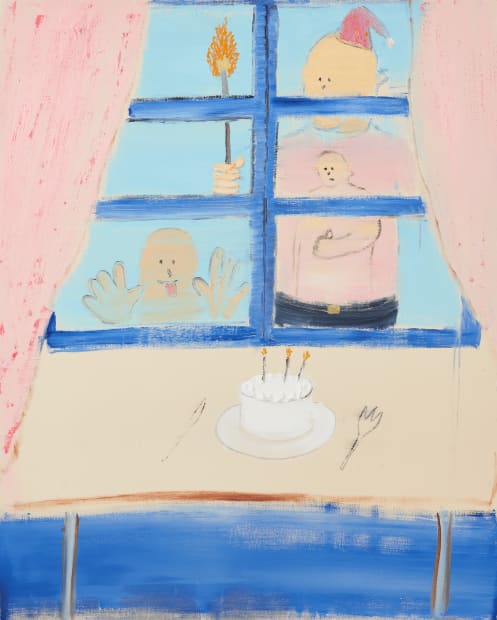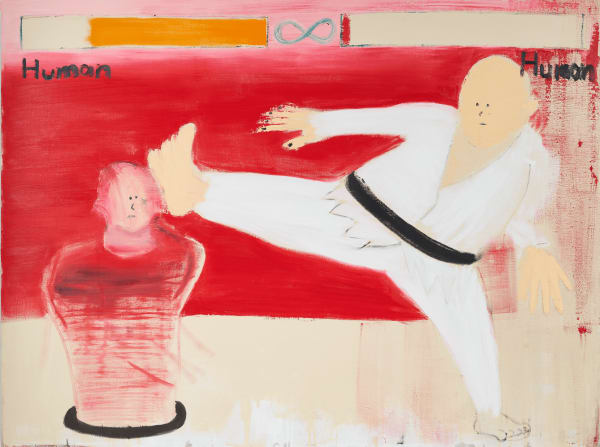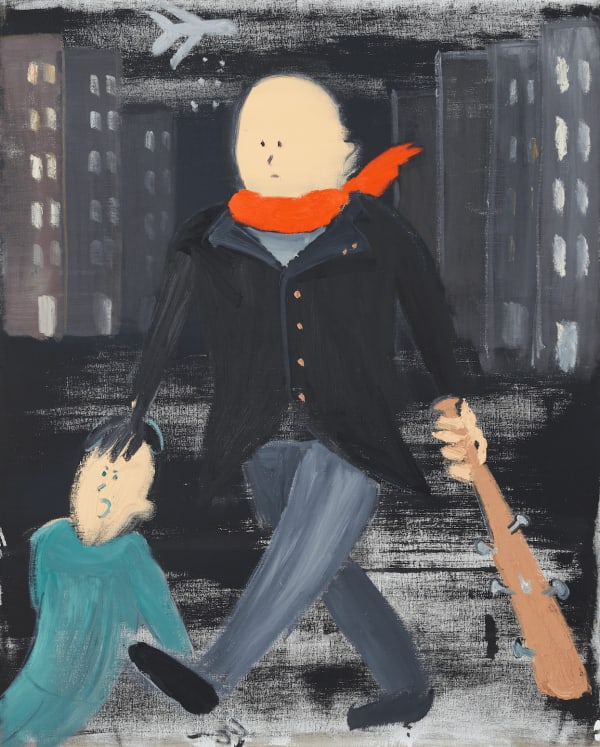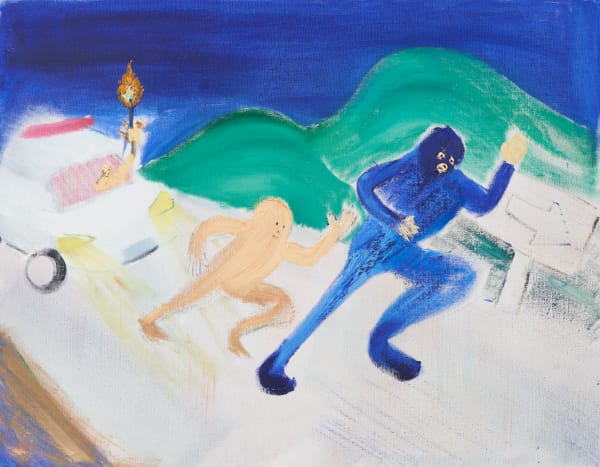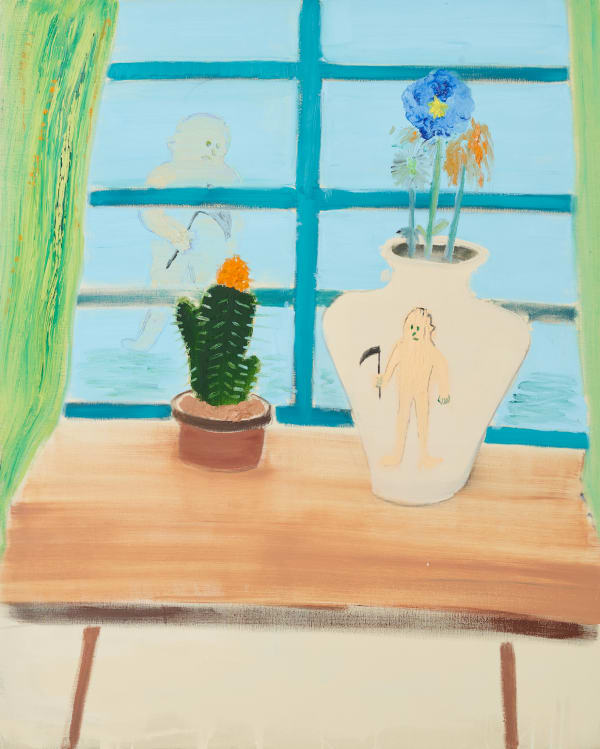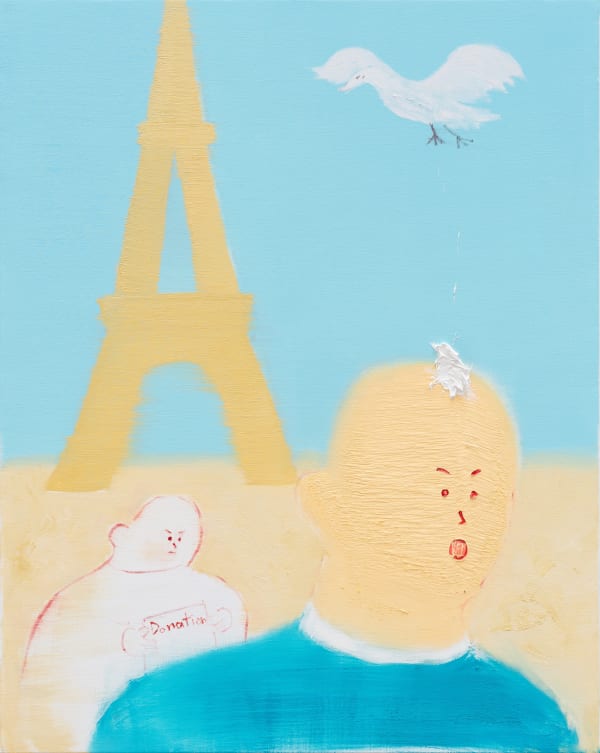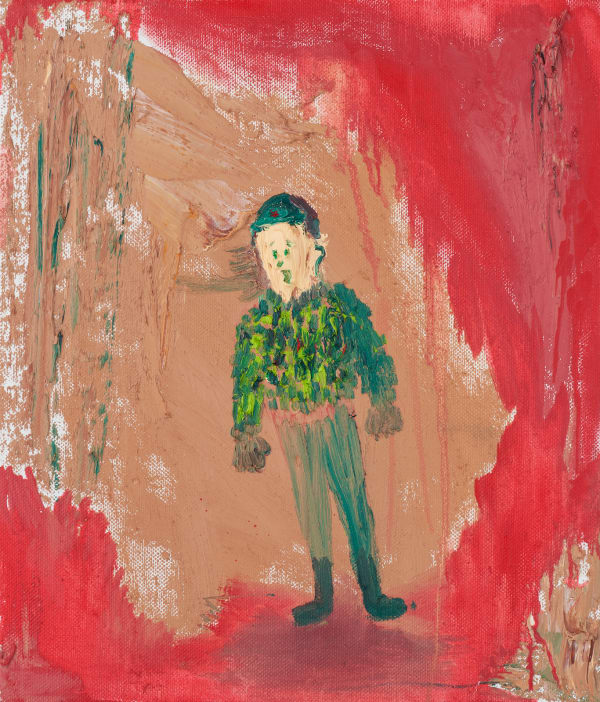-
 Shinya AzumaSnoopys, 2024Oil on canvas162 x 130.3 cm (63 3/4 x 51 1/4 in)
Shinya AzumaSnoopys, 2024Oil on canvas162 x 130.3 cm (63 3/4 x 51 1/4 in) -
-
-
Born in the 1990s, Azuma is part of the hinge generation that grew up alongside the internet but still remembers a time before its total ubiquity. His practice probes the juxtaposition and tensions between the material and virtual, the particular and general, and the flattened hierarchy of images that sets depictions of violence and global tragedy alongside viral memes and puerile banality.
Azuma culls his subjects from social media, video games, the news, as well as his own imagination and surroundings, rendering his compositions as drawings reminiscent of a dream journal before translating the selected sketches into paintings, shifting his focus to the creation of volumes and forms.
-
-
-
-
Citing painters such as Pierre Bonnard and Philip Guston, who worked fluidly between abstraction and illustrative figuration, Azuma’s application of pigment shifts between coarse brush strokes that only partially coat the surface and thick impasto, lending a strange materiality to the works evocative of the somatic experience of straddling the tangible and virtual.
Ranging in scale from medium formats to canvases over two meters long, these brightly colored tableaux unfurl like comic strips, or memes themselves, inducting us into a world of rogue humanoid characters careening down roads, dragging poor victims by the hair, or brandishing medieval weapons. Humorous and at times self-deprecating, Azuma’s subjects seem perpetually propelled in motion, imbuing the paintings with the blurred effect of endless scrolling, further and further down the feed. -
-
-
Indeed, screens and canvases become analogous in Azuma’s visual language, the voyeurism of social media captured by the windows that populate so many of these worlds, such as in Social Destroyer, Snoopys, or Flower Cutter (all 2024). The blurriness is also indicative of a certain ambivalence or ambiguity in Azuma’s works, which is further amplified by the symbolism of fire – an element, or technology that is both generative and destructive.
Despite the cartoonish pathos that emanates from these characters, Azuma’s faces remain anonymous. His illustrated and sculptural figures elide defined features, avoiding specificity to address more universal human experiences, impulses, desires and behaviors.
-
-
-
-
-
-
At certain moments, the pursuit of ambiguity in Azuma’s works – as any judgement of our hyper-accelerated cybernetic reality is notably absent – lends itself to a haunting and oneiric impressionism. The more intimately sized portraits Snow Day, Limbo, and Trivial Resistance conjure some type of purgatorial psychological state. In the latter, background and foreground meld into a mottled blue-anthracite fog, undergirded by deep red tones. From the center of the canvas the ghostly apparition of a figure emerges holding a stem engulfed in flames, the suggestion of a chain clasped onto its ankle shackles it to the surrounding ether.
-
-
-
-
 Shinya AzumaSnow day, 2024Oil on canvas53 x 45.5 cm (20 7/8 x 17 7/8 in)
Shinya AzumaSnow day, 2024Oil on canvas53 x 45.5 cm (20 7/8 x 17 7/8 in) -
 Shinya AzumaLimbo, 2024Oil on canvas53 x 45.5 cm (20 7/8 x 17 7/8 in)
Shinya AzumaLimbo, 2024Oil on canvas53 x 45.5 cm (20 7/8 x 17 7/8 in) -
 Shinya AzumaTrivial resistance, 2024Oil on canvas91 x 72.7 cm (35 7/8 x 28 5/8 in)
Shinya AzumaTrivial resistance, 2024Oil on canvas91 x 72.7 cm (35 7/8 x 28 5/8 in) -
 Shinya AzumaThree faces, 2024Oil painting on hand-carved wood40 x 20 x 21 cm (15 3/4 x 7 7/8 x 8 1/4 in)
Shinya AzumaThree faces, 2024Oil painting on hand-carved wood40 x 20 x 21 cm (15 3/4 x 7 7/8 x 8 1/4 in) -
 Shinya AzumaHuman(Purple), 2024Oil on canvas53 x 45.5 cm (20 7/8 x 17 7/8 in)
Shinya AzumaHuman(Purple), 2024Oil on canvas53 x 45.5 cm (20 7/8 x 17 7/8 in)
-
-
-
-
Individuality and surroundings are challenged, made porous, raising age-old existential questions about human essence and individuality, in the context of algorithmic and networked systems that increasingly shape our desires, emotions, and senses of self. As the artist expressed in an interview, 'Although I say that I am my ultimate self, I don't actually exist, but I am created by the environment around me, the environments that make me.'
-
 Potrait of Shinya Azuma. Photo: Mike Derez.
Potrait of Shinya Azuma. Photo: Mike Derez. -
Subscribe Newsletter
Be the first to know about new exhibitions, artist updates, as well as books and more. Sign up for our newsletter below.

